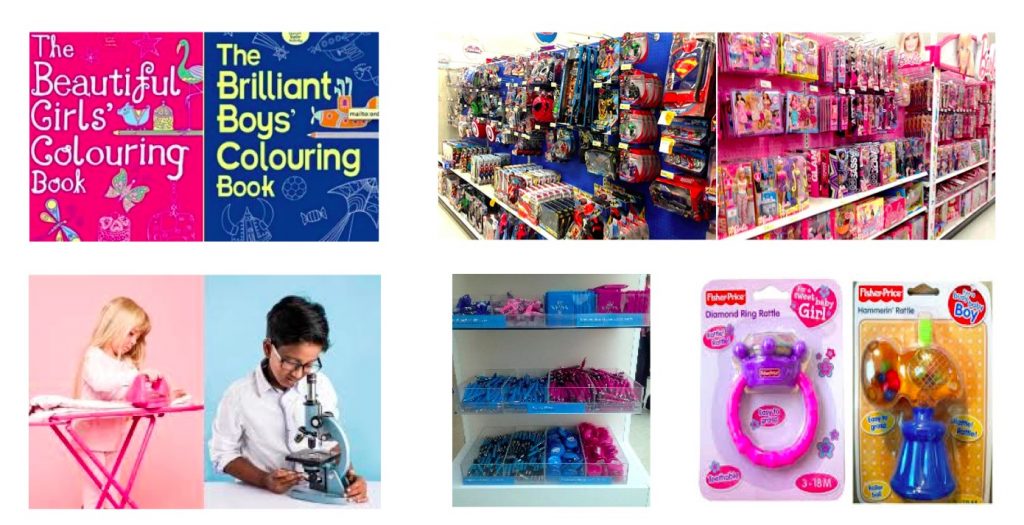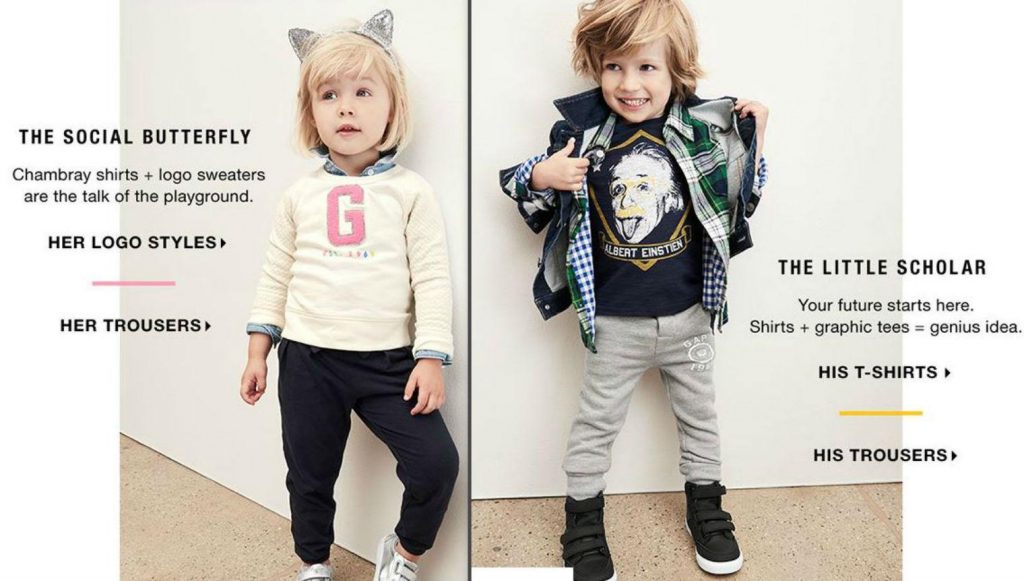Children grow up bombarded by gender stereotypes in books, the media and marketing which perpetuate a world in which boys are strong protectors and adventurers and girls are nurturing and thoughtful and decorative. Colour schemes, toys, books, media, clothes, even family compliments – they all tell children there’s a right way to be a boy or a girl and that, to fit in, they should wear, play with, like and even study different things. Girls and boys, feminine and masculine, are set up as ‘opposites’ and gender painted as a binary with little room for expression outside of the pink-blue divide.


These messages and assumptions about a child’s interests, likes, dislikes and characteristics risk becoming self-fulfilling as the child picks up from those around them what is seen as ‘normal’ or ‘appropriate’ according to their gender – known as ‘gendered norms’.
These gendered norms are fixed early, by about the age of eight and they are a powerful factor in shaping the subjects children choose in school, the careers they aspire to, their sense of self, their behaviours towards one another and their ability to articulate their emotions.
These norms feed the gender unequal outcomes that can be seen throughout society – at home, at work and in public life.
Studies over recent decades have all come to the same resounding conclusion; the perceptions children have about certain jobs and careers are formed and sometimes cemented at a young age. These studies have emphasised that children’s aspirations are often shaped, moulded and restricted by gender stereotyping…
Drawing the Future, 2018
Find out more: see Why it matters and Gender stereotypes in schools
